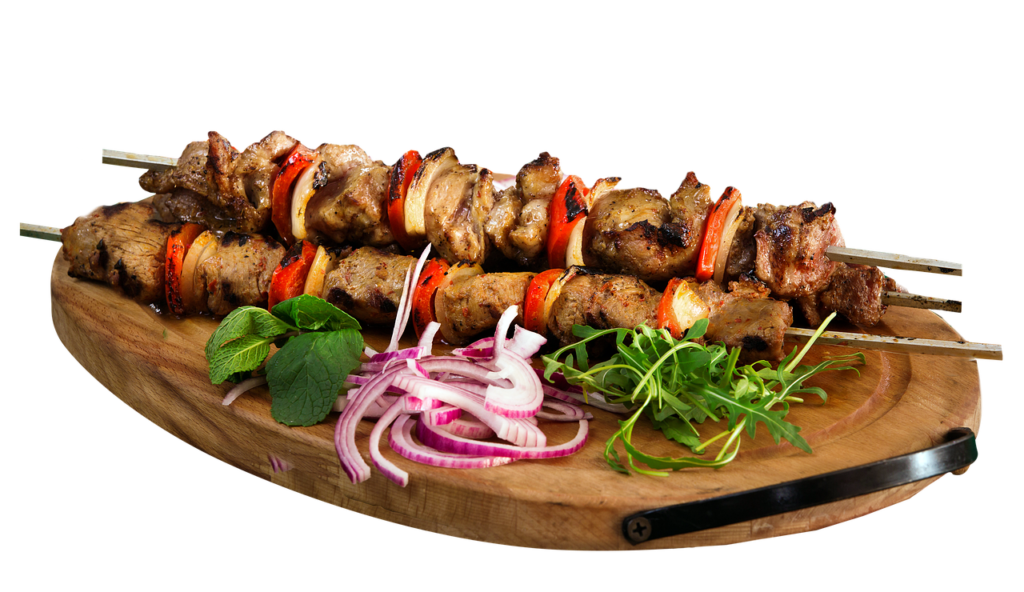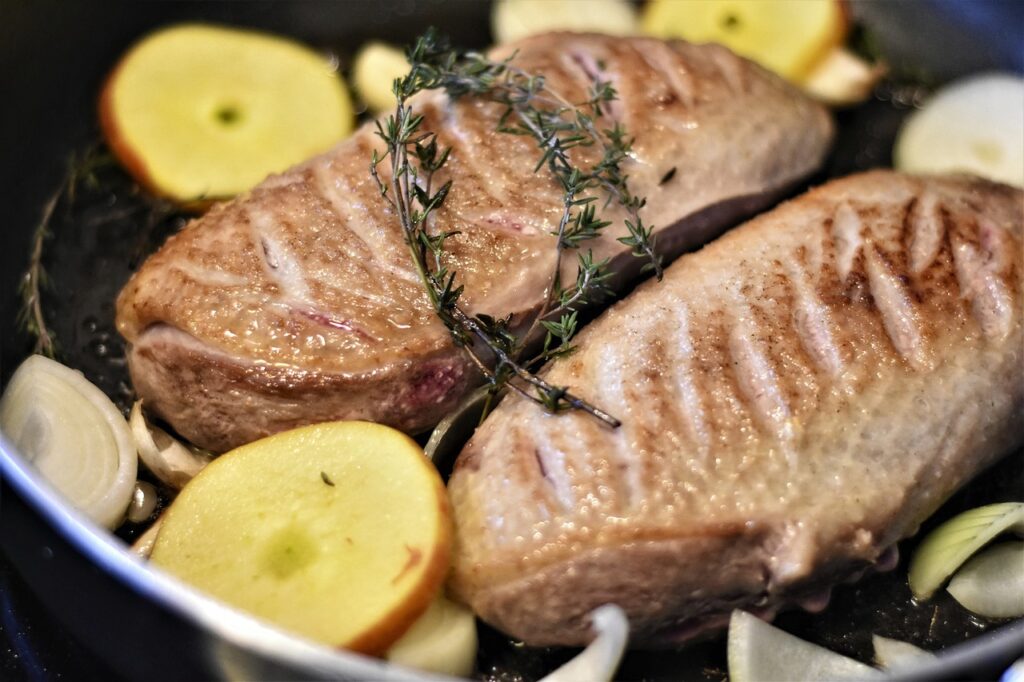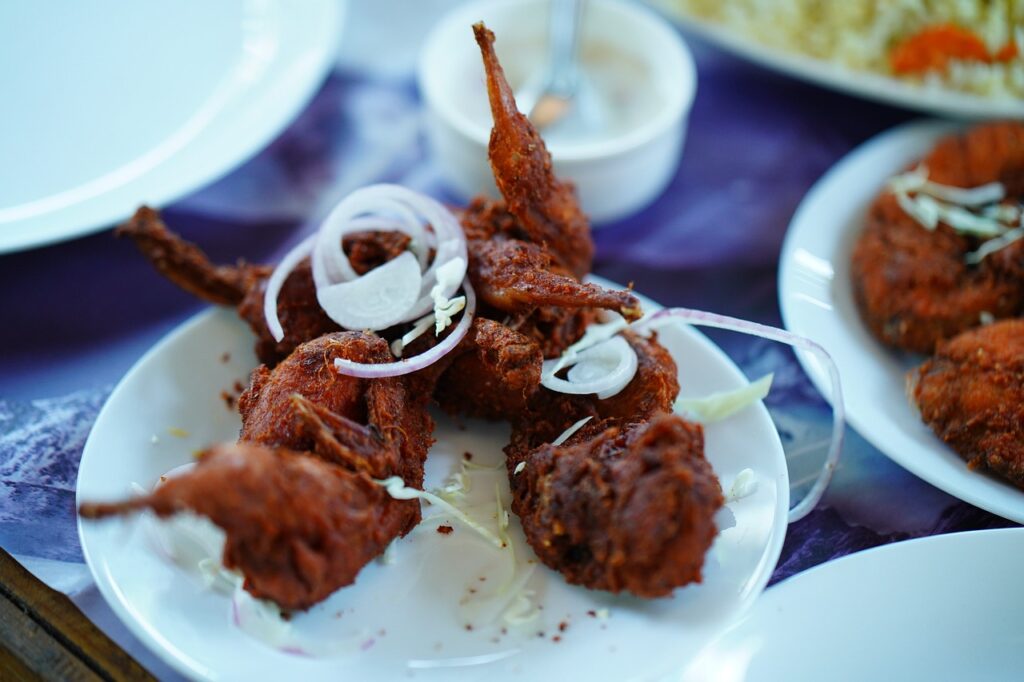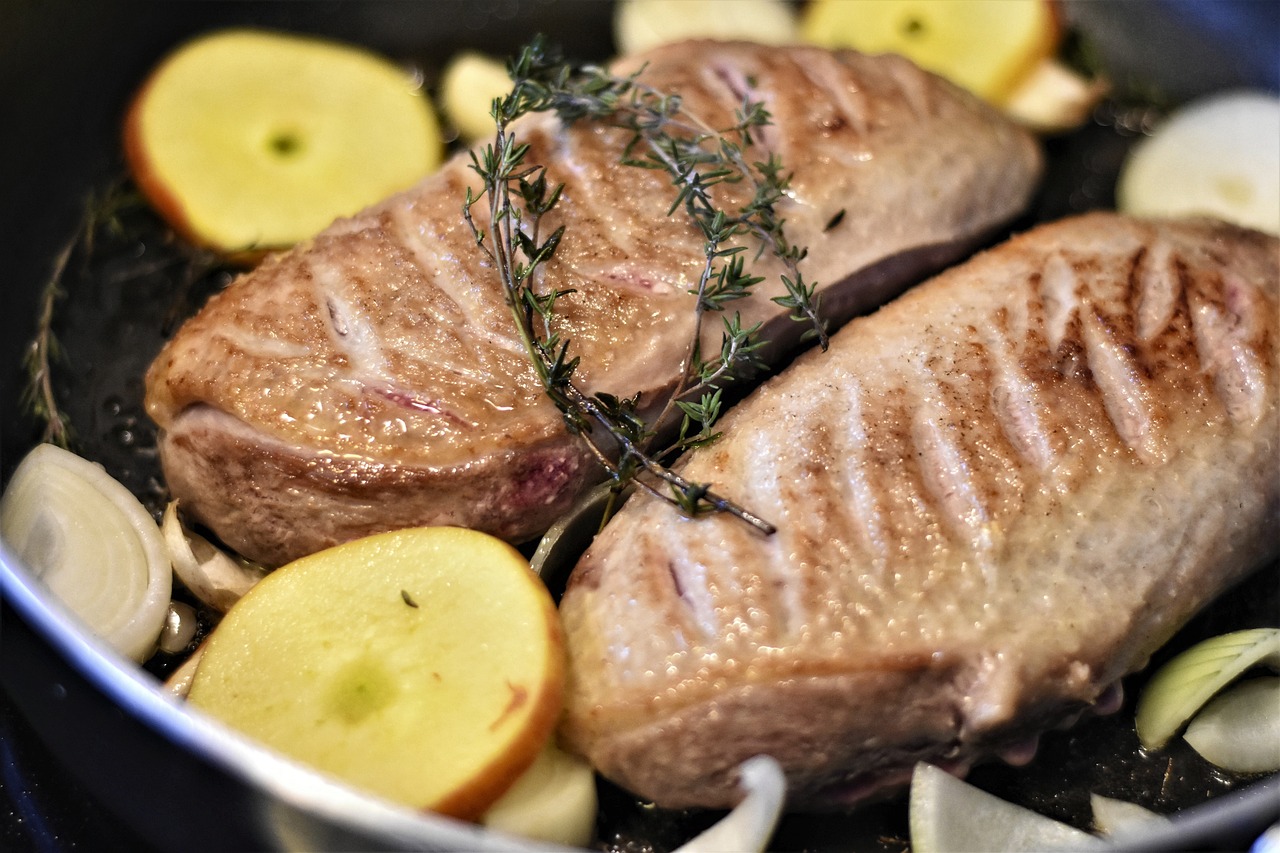Are you tired of serving dry and tough roast meat at your dinner table? Look no further! In this article, we will share some invaluable tips and techniques to help you achieve the perfect roast every time. Whether you’re a seasoned chef or an amateur cook, our expert advice will transform your roast into a juicy and tender masterpiece. So, get ready to take your cooking skills to the next level as we unravel the secrets behind the perfect roast.

Choosing the Right Cut
Selecting the Ideal Cut
When it comes to preparing the perfect roast, one of the most important factors to consider is the type of meat you choose. Different cuts of meat have varying levels of tenderness and flavor, so it’s essential to select the right cut for your roast. For a tender and juicy result, consider cuts like ribeye, tenderloin, or prime rib. These cuts are known for their marbling and tenderness, making them ideal for roasting.
Considering the Fat Content
The fat content of the meat plays a significant role in the flavor and moisture of your roast. While some cuts have a good amount of natural fat, others may be leaner. It’s crucial to consider the fat content when choosing your cut. More fat can provide added flavor and juiciness to your roast, but it’s important to strike a balance. If you prefer a leaner roast, opt for cuts such as top sirloin or eye of round. For those seeking a richer and more succulent roast, cuts like chuck roast or brisket with higher fat content may be the way to go.
Evaluating the Marbling
When examining different cuts of meat, pay close attention to the marbling. Marbling refers to the thin streaks of fat that are dispersed throughout the muscle. These pockets of fat are what contribute to the tenderness and flavor of the meat. Cuts with more marbling usually result in a more flavorful and delicious roast. When choosing your cut, look for even distribution of fat throughout, as this will ensure that the roast remains juicy and tender during cooking.
Preparing the Meat
Understanding Dry Aging
Dry aging is a process that involves aging the meat for a certain period to enhance its flavor and tenderness. During dry aging, enzymes naturally break down the proteins in the meat, resulting in a more tender and flavorful roast. If you have the time and patience, consider dry aging your meat before roasting. Simply place the meat on a rack in the refrigerator, uncovered, for a few days. This process allows the meat to develop a crust while the flavors deepen and intensify.
Brining for Moisture
For an extra juicy and tender roast, brining is a technique worth considering. Brining involves soaking the meat in a solution of salt and water for a certain period. This process helps the meat retain moisture during cooking, resulting in a more succulent roast. To create a brine, dissolve salt in water and submerge the meat for a few hours or overnight. The salt in the brine enhances the meat’s flavor and tenderizes it, ensuring a delicious and moist roast.
Trimming Excess Fat
While fat is essential for flavor and juiciness, it’s important to trim any excessive fat from the roast before cooking. Excess fat can lead to greasiness and may prevent the meat from properly cooking. However, be careful not to remove all the fat, as it adds flavor and moisture to the roast. Trim the fat to a reasonable thickness, leaving enough to enhance the taste and texture of the meat.

Seasoning
Using Salt to Enhance Flavor
Salt is a crucial ingredient when it comes to enhancing the flavor of your roast. Salt helps to draw out the natural juices and flavors, resulting in a more succulent and flavorful meat. To season your roast, generously sprinkle it with salt on all sides, ensuring that it is evenly coated. Allow the salt to penetrate the meat by letting it sit for at least 30 minutes before cooking, or, for an even more intense flavor, refrigerate the roast with the salt overnight.
Experimenting with Herbs and Spices
Beyond salt, you can take your seasoning game to the next level by incorporating a blend of herbs and spices. Experiment with different combinations to find the flavors that complement your chosen cut of meat. Popular herbs for roasts include rosemary, thyme, and sage, while spices like paprika, garlic powder, and black pepper can add an extra kick. Rub the herbs and spices onto the surface of the roast, ensuring an even distribution, and allow them to infuse the meat with their aromatic flavors.
Creating a Flavorful Rub
If you want to infuse your roast with a burst of flavor, consider creating a flavorful rub. A rub is a combination of herbs, spices, and other seasonings that are applied to the meat and allowed to sit before cooking. Mix together your preferred herbs, spices, and seasonings, such as brown sugar, chili powder, cumin, and garlic, to create a unique and delicious rub. Massage the rub onto the surface of the roast, ensuring it is well-coated, and let it rest for some time to let the flavors meld together.
Preheating the Oven
Ensuring Even Cooking
One of the secrets to a perfect roast lies in proper oven preheating. Before placing the meat in the oven, it’s essential to preheat it to the desired temperature. Preheating ensures that the oven is evenly heated, allowing for consistent cooking and preventing any cold spots that could result in unevenly cooked meat. This step is crucial in achieving a juicy and tender roast with a beautifully caramelized exterior.
Optimizing Flavor Development
By preheating the oven, you also optimize the development of flavors in the roast. As the heat penetrates the meat, it helps to break down the proteins and release the aroma and flavor compounds. The initial blast of heat from the preheated oven aids in browning the meat’s surface, creating a delicious crust that seals in the juices and enhances the overall flavor of the roast.
Using the Right Temperature
Determining the right temperature for your roast is essential for achieving the desired level of doneness. The temperature you choose will depend on the cut of meat and your personal preference. Generally, a higher temperature is ideal for cuts that have higher fat content, as it helps to render the fat and create a crispy exterior. Leaner cuts may benefit from a lower temperature to ensure they remain tender and juicy. Consult a reliable cooking chart or recipe to determine the recommended internal temperature for the specific cut you are using.

Roasting Techniques
Using the Roasting Rack
To achieve a perfectly roasted meat, it’s best to use a roasting rack. A roasting rack elevates the meat, allowing hot air to circulate around it, resulting in even cooking and browning. The elevated position also helps to prevent the meat from sitting in its juices, which can lead to steaming rather than roasting. Place the roast on a roasting rack set in a baking tray or roasting pan that can collect any drippings for later use in making delicious sauces or gravies.
Basting for Moisture
Basting is a technique often used in roasting to keep the meat moist and enhance the flavor. Basting involves periodically brushing the roast with its own juices or a liquid such as broth or melted butter. As the roast cooks, the basting liquid helps to keep the meat moist and adds an extra layer of flavor. Use a basting brush to apply the liquid, ensuring that it covers the entire surface of the roast. Baste the meat every 20-30 minutes to maintain its moisture throughout the cooking process.
Rotating the Meat
Rotating the meat during the cooking process is a valuable technique to promote even cooking and browning. By rotating the roast, you ensure that all sides are exposed to the heat evenly, preventing any one area from becoming overcooked or undercooked. This technique is especially useful for larger roasts that may not fit perfectly in the oven. Aim to rotate the meat at least once during the cooking process to achieve a beautifully cooked and evenly browned roast.
Monitoring Internal Temperature
Investing in a Meat Thermometer
To ensure your roast is cooked to perfection, it’s crucial to invest in a reliable meat thermometer. A meat thermometer allows you to accurately measure the internal temperature of the roast, ensuring that it reaches the desired level of doneness. Depending on the cut and your preference, different internal temperatures indicate varying degrees of doneness. Insert the meat thermometer into the thickest part of the roast, avoiding contact with bone or fat, for an accurate reading.
Determining the Right Doneness
Determining the right level of doneness for your roast is a matter of personal preference. The internal temperature of the roast will indicate the desired doneness. For a medium-rare result, when the center of the meat is slightly pink and juicy, aim for an internal temperature of around 135°F (57°C). If you prefer a medium doneness with a slightly more cooked center, aim for an internal temperature of around 145°F (63°C). Remember to account for carryover cooking, where the meat continues to cook after it is removed from the oven, and the internal temperature rises.
Resting the Meat
Once your roast reaches the desired internal temperature, it’s essential to let it rest before slicing. Resting allows the juices to redistribute within the meat, resulting in a juicier and more tender roast. Tent the roast loosely with foil and let it rest for about 15-20 minutes. During this time, the residual heat will continue to cook the roast slightly, so be sure to take this into account when determining the doneness. Resting also makes it easier to carve the meat neatly, ensuring clean slices and a beautiful presentation.
Slicing and Serving
Properly Carving the Roast
When it comes to slicing your roast, proper carving techniques are key to achieving the best results. Start by using a sharp carving knife to cut across the grain for maximum tenderness. Cut thin slices against the grain, aiming for uniform slices to ensure even distribution of flavor and texture. Take your time and use a gentle, smooth motion to avoid tearing or shredding the meat.
Presenting a Stunning Platter
To make your roast even more impressive, consider presenting it on a stunning platter. Choose a platter that complements the roast and enhances its visual appeal. Arrange the slices neatly on the platter, being mindful of maintaining a beautiful presentation. Garnish with fresh herbs, such as rosemary or parsley, to add a pop of color and freshness.
Pairing with Delicious Sides
Completing your roast with delicious sides can elevate the overall dining experience. Consider serving your roast with classic accompaniments such as roasted potatoes, creamy mashed potatoes, grilled vegetables, or a crisp salad. These side dishes not only provide a well-rounded meal but also complement the flavors of the roast beautifully. Don’t forget to serve a flavorful gravy or sauce alongside to enhance the taste even further.
Troubleshooting Common Issues
Preventing Dryness
Dryness is a common concern when roasting meat, but there are steps you can take to prevent it. One of the key factors in preventing dryness is ensuring the roast is properly seasoned. The salt helps to draw out the natural juices, while brining can provide an extra layer of moisture. Additionally, be mindful of the cooking time and temperature. Overcooking can lead to dryness, so it’s essential to monitor the internal temperature and remove the roast from the oven when it reaches the desired doneness. Finally, be sure to let the roast rest before carving, as this allows the juices to redistribute, resulting in a juicier final product.
Addressing Undercooked Meat
If you find that your roast is undercooked, there are ways to remedy the situation without sacrificing flavor or tenderness. One option is to return the roast to the oven and continue cooking it at a slightly lower temperature until it reaches the desired doneness. Another option is to slice the roast and finish cooking the slices on a stovetop or grill. This method allows you to achieve the desired level of doneness without risking overcooking the entire roast. However, it’s important to exercise caution and monitor the internal temperature carefully to prevent any further undercooking.
Dealing with Overcooking
Overcooking a roast can result in dry and tough meat, but there are ways to salvage the situation. If the roast is slightly overcooked, you can try slicing it thin and serving it with a flavorful sauce or gravy to add moisture and mask any dryness. Alternatively, consider repurposing the overcooked meat into other dishes such as stews or sandwiches, where the meat can be cooked further with additional ingredients to restore moisture and tenderness. Learning from the experience and adjusting the cooking time and temperature for future roasts can also help prevent overcooking in the future.
Alternative Cooking Methods
Exploring Sous Vide
Sous vide is a cooking method that involves cooking food in a precisely controlled water bath. This technique can result in a perfectly cooked roast with exceptional tenderness and juiciness. To cook a roast sous vide, vacuum-seal the seasoned meat in a bag and immerse it in a water bath set to the desired temperature. The roast cooks slowly and evenly, resulting in consistent doneness throughout. Once cooked sous vide, you can sear the roast briefly to create a crispy exterior and enhance the flavor.
Trying Slow Cooking
Slow cooking is another popular method for achieving tender and flavorful roasts. This method involves cooking the meat at a low temperature over an extended period. Slow cooking allows the meat to become incredibly tender as the collagen breaks down gradually. You can use a slow cooker or an oven set to a low temperature to achieve slow-cooked perfection. However, keep in mind that slow cooking may result in a less caramelized exterior compared to other methods.
Experimenting with Smoking
Smoking is a cooking technique that infuses meat with a unique smoky flavor. It involves cooking the meat in an enclosed smoker, allowing it to absorb the aromatic smoke generated by wood chips or chunks. Smoking can add an extra layer of complexity to your roast, resulting in a rich and flavorful end product. Experiment with different types of wood, such as hickory, applewood, or mesquite, to achieve varying levels of smokiness. Smoked roasts are often best enjoyed sliced and paired with complementary sauces or condiments.
Enhancing Flavor with Marinades
Choosing the Right Marinade
Marinades can be a fantastic way to infuse your roast with additional flavors and enhance its tenderness. When choosing a marinade, consider flavors that complement the meat and the herbs and spices used in the seasoning. For example, a soy-based marinade with ginger and garlic would pair well with pork or beef, while a citrus-infused marinade with olive oil and herbs would work well with chicken or fish. Ensure that the marinade’s acidity does not overpower the meat and that the flavors complement one another for a harmonious taste experience.
Marinating Times and Techniques
Marinating times can vary depending on the type of meat and the desired depth of flavor. If using a marinade with high acidity, such as citrus, it’s best to limit the marinating time to avoid the meat becoming too tenderized. Usually, marinating for a few hours up to overnight is sufficient to achieve the desired results. However, leaner cuts of meat or seafood may not require as long to marinate. Be sure to marinate the meat in a non-reactive container, such as a glass or plastic resealable bag, and refrigerate it during the marinating process for food safety.
Avoiding Overpowering Flavors
When marinating meat, it’s important to strike a balance and avoid overpowering flavors. While marinades can add a delicious layer of taste, excessive seasoning or strong flavors may overpower the natural flavors of the meat. Be mindful of the intensity of the marinade and the ingredients used. Taste the marinade before adding the meat to ensure it is well-balanced and will not overwhelm the flavor of the roast. Remember that the purpose of marinating is to enhance the meat’s natural flavors, not mask them.
In conclusion, achieving a juicy and tender roast requires careful consideration of various factors. From selecting the ideal cut and preparing the meat to seasoning it to perfection and utilizing the right cooking techniques, each step plays a crucial role in creating a delicious end result. By following these tips and techniques, you’ll be well on your way to master the art of roasting and delighting your guests with a stunning roast every time. So, get ready to take your roast to the next level and savor the mouthwatering results. Happy cooking!

